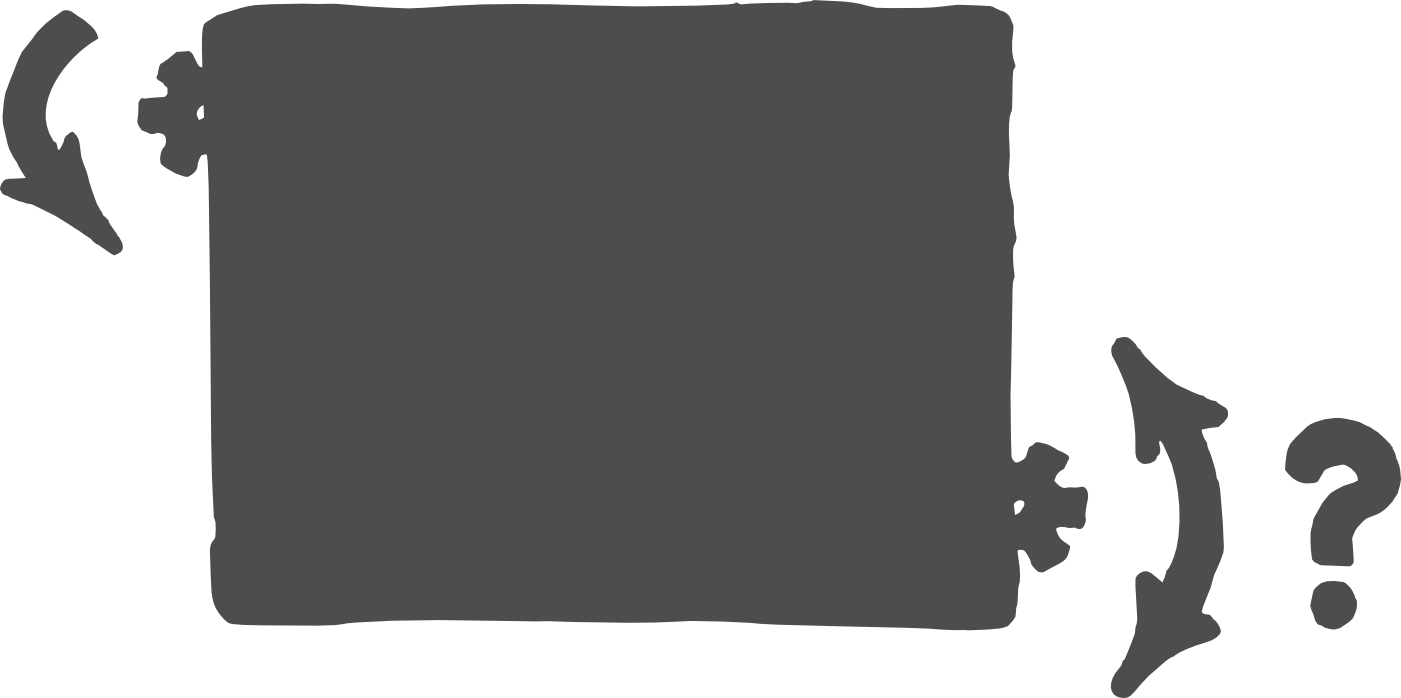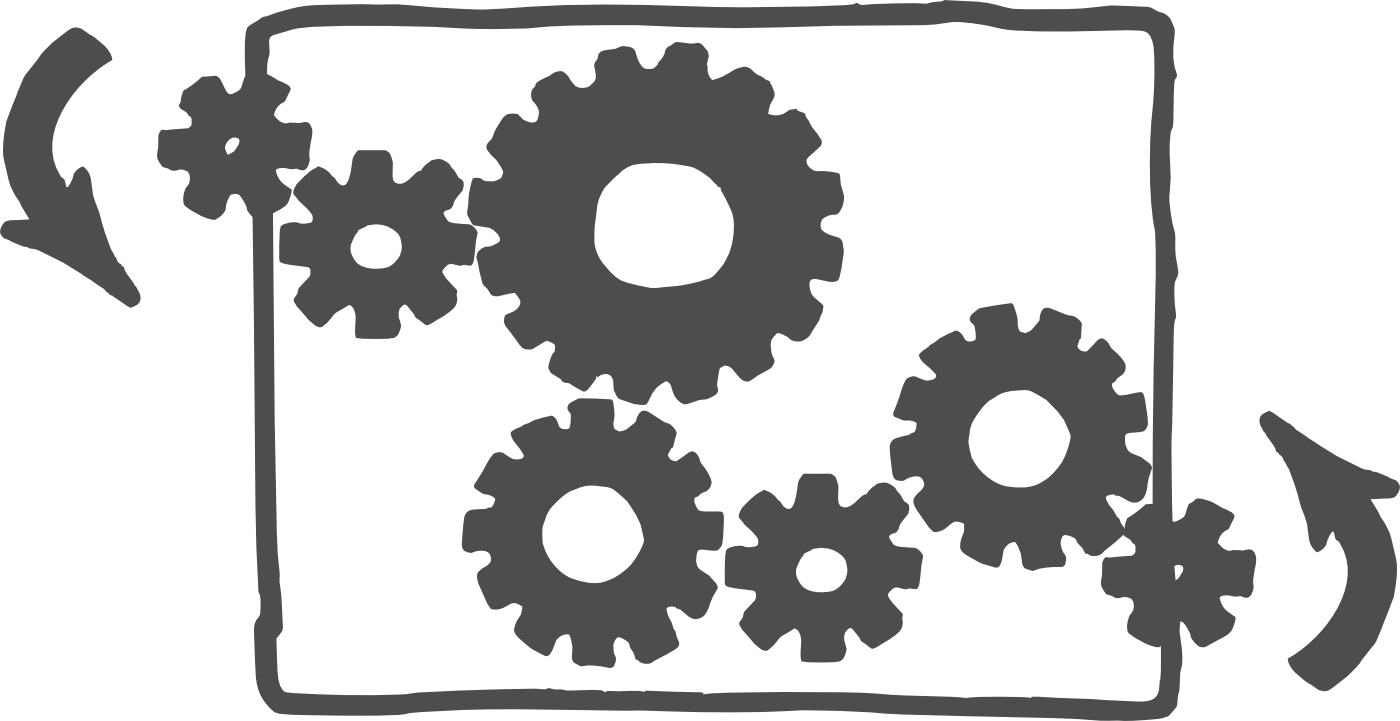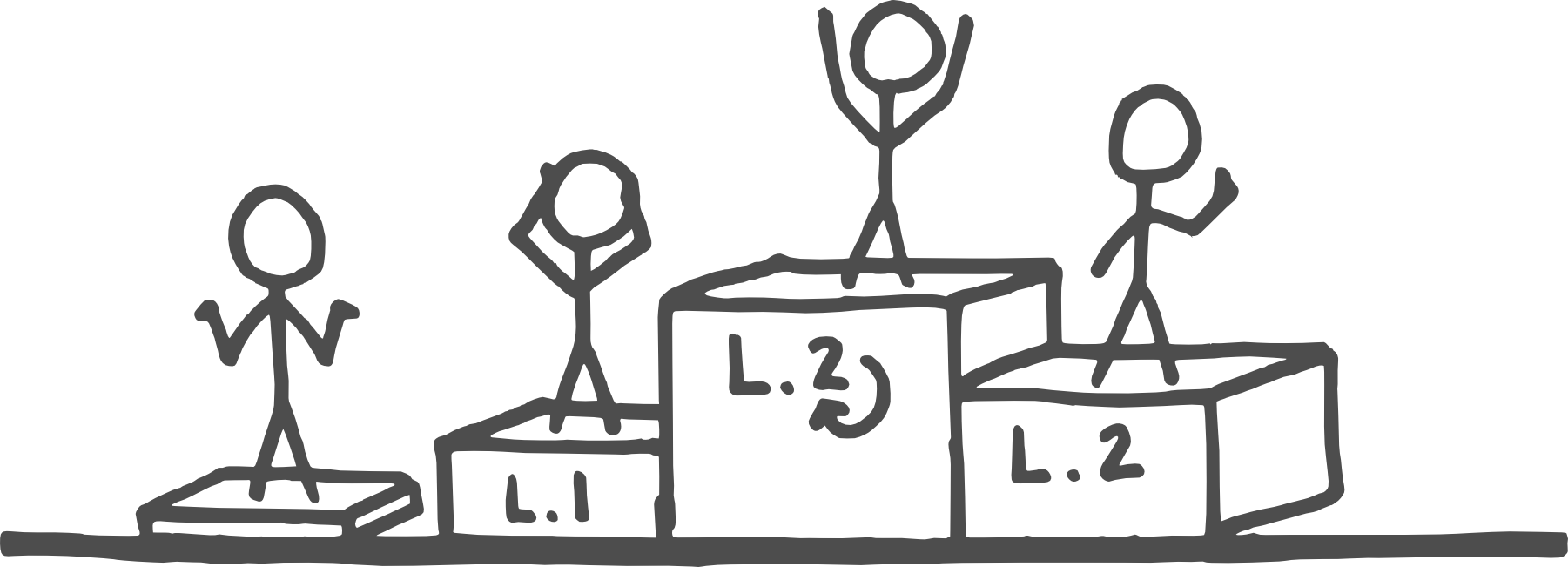Gears-Level Understanding
It seems to be important to distinguish between two kinds of knowing: the knowing that comes from listening to trusted sources, and the knowing that comes from seeing why the world couldn’t possibly be any other way.
Let’s imagine someone shows you a box with two gears partially sticking out of opposite sides:

At first, you don’t know what will happen if the gear sticking out on the left is rotated downward. It could send the right gear downward, or it could send it upward; it could have absolutely no effect whatsoever. If the person tells you that the result will be the right gear rotating downward, you’ll either take it on faith, or you won’t, depending on how confident they seem and how much you trust them.
If, on the other hand, you look inside the box yourself ...

... then you’ll gain a very different sort of confidence. It might take some work, but after a little thinking, you can know that the person’s claim is wrong. It doesn’t matter what sort of expertise they have, relative to you, or how much others respect their insight, or whether most people think you’re crazy for disagreeing with the established answer, because you can see how the gears must move. It would be deeply confusing for the other person to turn out to be right, in this case—it would violate your understanding of physics, similar to how an engineer who has spent some time understanding gyroscopes would be shocked if they suddenly started behaving the way a five-year-old expected them to.
There are two important takeaways, here. First, it’s important to recognize that it’s possible to achieve a “gears-level understanding” of any phenomenon, even if it might in practice be very difficult to achieve.
Second, you want to develop insight into whether or not you have it, in any particular case. For instance, you might find it confusing if turning a doorknob had no effect on the door opening, but it’s unlikely to violate your sense of reality. Does your System 1 seem to think that your car and your computer work by magic, and could just—stop working? Do your patterns of drive and motivation feel mysterious to you?
Gears-level understanding isn’t always a reasonable target, but all else being equal, having it is better than not, and seeking it is a good way to learn. It’s not the be-all-and-end-all, but it’s another lens to use when deciding whether or not you truly understand some aspect of the world around you.
Deliberate Performance

Advice: Look for ways to incorporate rationality practice into the things that you are already doing.
Rationality practice doesn’t always involve setting aside time to work on something. It can also involve going into tricky conversations with a different frame of mind, or trying out a new approach when writing a tough email, or quickly taking the outside view when confronted with a sudden problem at work. In particular, if you find that you’re too busy to do useful rationality practice, try thinking of “rationality” as any and all more effective approaches to the things that you’re already doing (instead of as an additional thing to add to the pile).
Researchers who study skill acquisition makes a distinction between “deliberate practice” and “deliberate performance” as two ways of developing skills. A violinist who is engaging in deliberate practice is setting aside time solely for improving their violin-playing skill, while being strategic about how to best improve their skills (e.g. playing a difficult measure several times in a row).
A violinist who is engaging in deliberate performance, on the other hand, is playing for an audience, but doing so in a way that is designed to improve their skills and not just to put on a good show. They're going to be mindful and attentive, rather than simply going through the motions—they'll be thinking and evaluating and watching themselves with any attention they have to spare.
It can be hard to find time to set aside to deliberately practice a CFAR rationality technique. Fortunately, performance opportunities for CFAR techniques are happening all throughout the day. Life is full of opportunities to embody the art of rationality, and attempt to make quick, subtle improvements to the way you’re thinking and acting. For example, if you need to write a program for your job, you could do deliberate performance by trying 10 seconds of pre-hindsight before you even begin.
Three ways to make deliberate performance a part of your everyday routine:
- Set a five-minute timer to brainstorm a list of opportunities for using five-second versions of the techniques you want to improve on
- When you have a boring task that you have to do, ask yourself “How can I do this task in a way that also serves my training goals?”
- Choose a high-level skill to work on each month (or a lower-level skill to overlearn for one or two weeks)
In addition to fitting more readily into your schedule, this approach of using bits of rationality technique during performance can help you see immediate benefits from the technique (which, in turn, will help your inner dashboard update on their actual usefulness).
The Strategic Level

When you learn from a mistake, it’s often a good idea to ask whether what you learned would have actually helped with the mistake you learned from.
Suppose you’re a student in college, and you’ve just failed a midterm. You studied for it, and you thought you knew the material, but it turned out that the exam focused on one of the concepts you figured wasn’t worth going over in depth.
- Level 0: The thought “I should have studied that!” is utterly wasted. The whole point is that you thought it wouldn’t be on the exam, and did what made sense to you at the time. Spending energy castigating yourself for past decisions is a poor way to make yourself more effective going forward, so try not to do it.
- Level 1: Asking yourself “What do I do now?” is much more productive. You can think of this as the tactical level, where you address specific opportunities to improve the situation. Maybe you can do some extra credit, or use what you learned about your teacher’s testing style to better prepare for the next exam. This thought successfully keeps you growth-focused and moving forward.
- Level 2: But you can do more than just patch the problem. You can ask yourself “What way of thinking would I have had to employ to have caught this problem ahead of time?” Maybe you didn’t pay attention to the amount of time your teacher spent on the topic, or you realize that a sort of sneaky, gotcha attitude is a part of their teaching style. You can think of this as the strategic level, reallocating energy from problem solving into problem prevention.
A tactical update is a change in what you plan to do, whereas a strategic update is a change in how you generate plans. It’s about improving your algorithms, rather than collecting facts and heuristics. When you seek a strategic update—when you think on the strategic level—you’re asking how you can use each situation to fuel overall improvement. This makes you more effective over time—and makes your method of making yourself more effective itself more effective.
Note that you can also seek strategic updates from success—what did you do right, and can you make it more likely that you’ll do that again in similar situations? What could have gone poorly (but didn’t), and what thinking style can make those potential errors continue to not happen?
It’s also valuable to seek strategic updates from watching others. When someone makes an insightful comment (e.g., correctly predicting “Oh, the professor is going to put this subject on the exam”), a tactical response is to listen and benefit from the insight. But rather than stopping there, we encourage you to ask how they came up with that insight, and to incorporate that strategy into your own thinking.
Consider applying this to the CFAR material as well. Don’t be satisfied with useful techniques. Look for what generated them—including the whole idea of seeking strategic updates at all.